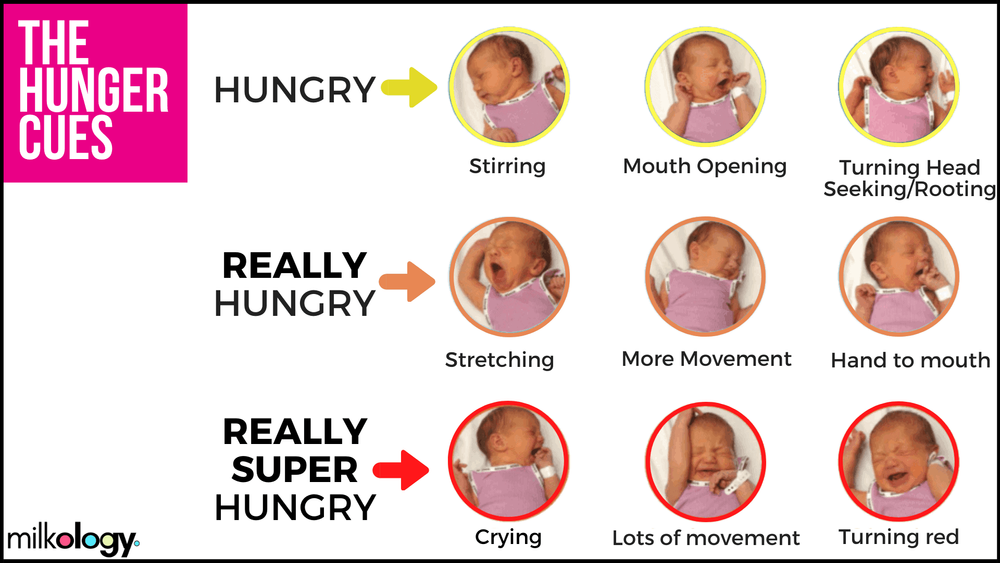How often should a newborn baby be breastfed
It is almost certain that your newborn baby will be hungry from the moment they are born. New mothers often find their babies are ready to nurse within minutes of birth, which is not uncommon. In this article, i will be discussing about ‘How often should a newborn baby be breastfed’.
If your baby has just been fed, how soon should he or she be fed again? What is the appropriate eating schedule for them in the coming days and weeks? Surely you aren’t the only one who doesn’t know the answers. According to experts, newly pregnant mothers often find it difficult to establish a feeding schedule.
In Schaumberg, Illinois, Carol Huotari, IBCLC, director of La Leche League International’s Breast Feeding Information Center, says that one key aspect of breastfeeding is learning how often your baby needs to eat.
It is common for women to worry that their babies will suffer if they don’t feed them regularly because their baby wants to feed so frequently.
“It is common for mothers to believe that they aren’t making enough milk because their baby is eating frequently, or because their breasts don’t feel as full as time marches on. But Linda Hanna, an IBCLC and lactation educator at Cedars-Sinai Medical Center in Los Angeles, says this is rarely the case.
In other words, what should you expect while breastfeeding?
-
Due to the ease of digestion of breast milk, most breastfed babies eat more frequently than those fed formula, usually between eight and twelve times daily. For the first few weeks, most babies need a feeding every hour and a half to two hours.
-
The cry of your infant is surely a sign that he or she is hungry. However, Huotari recommends that you never attempt to feed an infant when the infant is in this state of distress. Unless your baby starts crying, the most appropriate approach is to feed him or her as soon as possible. Babies have very small tummies, so you should assume they will be hungry within two or three hours, Huotari says.
Breastfeed your baby before the point at which he starts crying in response to hunger, according to the American Academy of Pediatrics.
-
A child who nuzzles against your breast when held, opens their mouth as if to take your breast, makes sucking motions, or puts a clenched fist into their mouth, may be beginning to display these signs early on.
-
After you’ve been on a regular schedule for a while, you may only need to feed eight times a day (instead of 12). However, if your baby is suffering through a growth spurt or simply needs more milk, their number of feedings could increase again.
Breastfeeding while sleeping

There are times when a hungry baby won’t have any trouble waking you up in the middle of the night, but this is not the case in most cases. In a WebMD article, Hanna says that more than half of newborns are sleepyheads and don’t wake up to eat regularly.
As soon as you begin breastfeeding, you shouldn’t let your baby nap during feeding time until your milk supply has fully developed, according to Hanna. You need to continue releasing milk to nourish your baby, just like your breasts need to feed you. As breastfeeding progresses, it is imperative to express milk regularly during the first few weeks to stimulate the production of more milk.
In the event that your baby doesn’t wake up for a feeding, don’t wait any more than four hours before waking them up. If the problem persists, inform your pediatrician as soon as possible,” says Huotari. Depending on your baby’s age, he or she may sleep up to five hours without feeding you during the night by the time they are about four weeks old.
Breastfeeding With 1 Breast or 2: Which Is Better for Which Situation?
It wasn’t that long ago that doctors advised women to switch breasts halfway through breastfeeding, so babies could start sucking on one side and finish on the other.
Doctors today understand the two types of milk produced during breastfeeding.As a result of the American College of Obstetrics and Gynecology recommendations, the first milk you express is your baby’s “fore milk”, which provides sugar, protein, minerals, and fluids to quench the baby’s thirst. By contrast, “hind milk” is a more substantial and difficult release. Milk in this category is the creamiest, fattest, most satisfying, and most nutritional, making it vital for your baby’s development and growth.
 This photo is a courtesy of Westchester Health
This photo is a courtesy of Westchester Health
“Change breasts mid-feeding and you risk giving your baby just the foremilk and no hindmilk. Instead, continue feeding your baby until your breast is completely drained, then switch to the other breast for the next feeding,” Huotari advises.
Breastfeeding one side at a time also offers an additional benefit: Babies with watery breast milk often experience cramps or gas problems. The more breasts you give your baby per feeding, making sure they receive adequate milk, the less gas they will have and the less cranky they will be.
The Huotari method recommends switching back to the original breast after finishing feeding on one breast and burping it if the baby is still hungry afterwards. Observe the original breast for a significant amount of time before turning to the second breast.
Is breastfeeding sufficient?
Breastfeeding moms worry a lot about whether their babies are getting enough nutrition. It is likely that your breasts produce enough milk in most cases, so you have nothing to worry about. The chances are that your baby is happy to eat if he/she is nursing eight times a day. The most reliable way to determine whether your baby is dirty is by examining her dirty diapers.
It is suggested that the number of dirty diapers should match how many days have passed since birth during the first seven days of life. During the first three days of your baby’s life, the infant should dirty three diapers. The number of diaper changes your baby requires in a 24-hour period will increase after seven days. “A good sign is four to ten wet diapers a day following the first seven days,” Hanna tells WebMD.
You may also find it difficult to tell if your baby is wetting the right amount with disposable diapers that pull wetness deep inside the lining. Use the diaper’s weight as a guide when this is the case. Your baby is most likely wetting the right amount if it “feels” heavier than a clean, unused diaper, according to Huotari.
Your baby should also have frequent mustard-colored stools, which gradually lighten in color by the fifth day after he or she begins to wet. Can you tell me what to expect?
Hannah says the diaper should be changed anywhere from once to five times a day.
Despite the fact that infants rarely suffer from dehydration, her advice is to watch for overly dry, dark, or stiff stools after the fifth day — or a lack of stools altogether. You should speak with your pediatrician as soon as possible about these problems.
There is need for dehydration

In spite of the fact that your baby may be dehydrated, Huotari warns against giving him or her water. In place of frequent or long breastfeeding sessions, she recommends treating your baby to more frequent breastfeeding sessions. As a result, the American Academy of Pediatrics recommends daily vitamin D drops for all breastfed babies. These drops help supplement the small amount of vitamin D found in their mother’s milk. If you have questions about the drops or how much to apply, ask your pediatrician.
You should not be alarmed if your baby seems lighter in weight during the first week after feeding. It is not uncommon for newborns to lose up to 10% of their birth weight within their first 24 hours. Approximately an ounce of your baby’s weight should be regained every day after birth if feeding proceeds at a normal rate. A majority of babies are able to regain their birth weight within two weeks.
“The chubby, cherub-like appearance that most people associate with well-fed babies may not always be true,” says Hanna, who acknowledges that breastfed babies tend to have more lean muscle mass and less body fat.
A doctor’s visit should be scheduled for your baby between three and five days of age and again between two and three weeks of age. This will ensure that a proper amount of food is being consumed and that weight is being gained properly.
Last but not least, you can look at your own body for proof that your baby is receiving the right amount of nutrition. If your breasts feel soft after feeding, your baby is receiving a well-balanced diet, as evidenced by drained milk.
 This photo is a courtesy of milkology
This photo is a courtesy of milkology
SUMMARY
The duration of each breastfeeding session should be about a half hour according to Huotari. Since your baby will suckle for approximately 15 to 20 minutes at your breast, this is a normal occurrence. You may notice your baby pauses between swallows more frequently as his or her tummy becomes full. Your baby is winding down after the feed when he/she expresses satisfaction with the feed. Huotari, however, warns that if your baby stops swallowing or sucking after just 10 minutes, it may be a sign of malnutrition. Reposition your breast if this is the case in order to make sucking easier for the baby. There should be no obstruction in your baby’s nose. This can make feeding more difficult for her.
